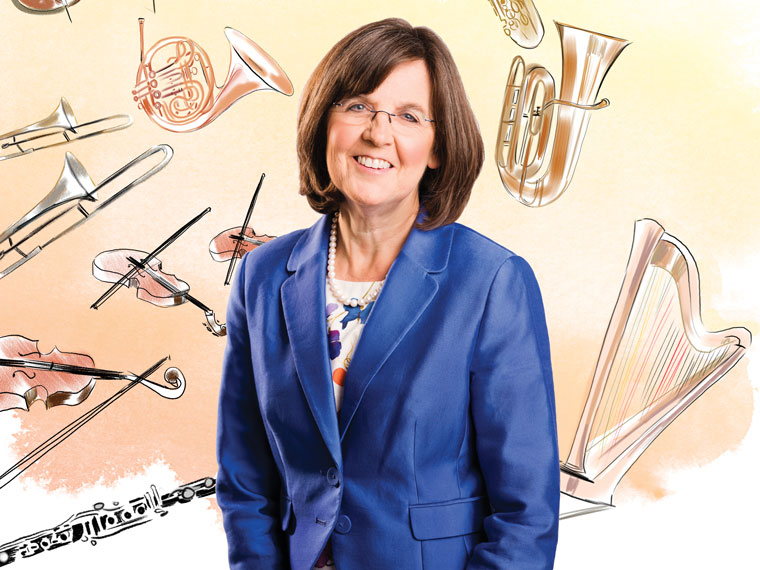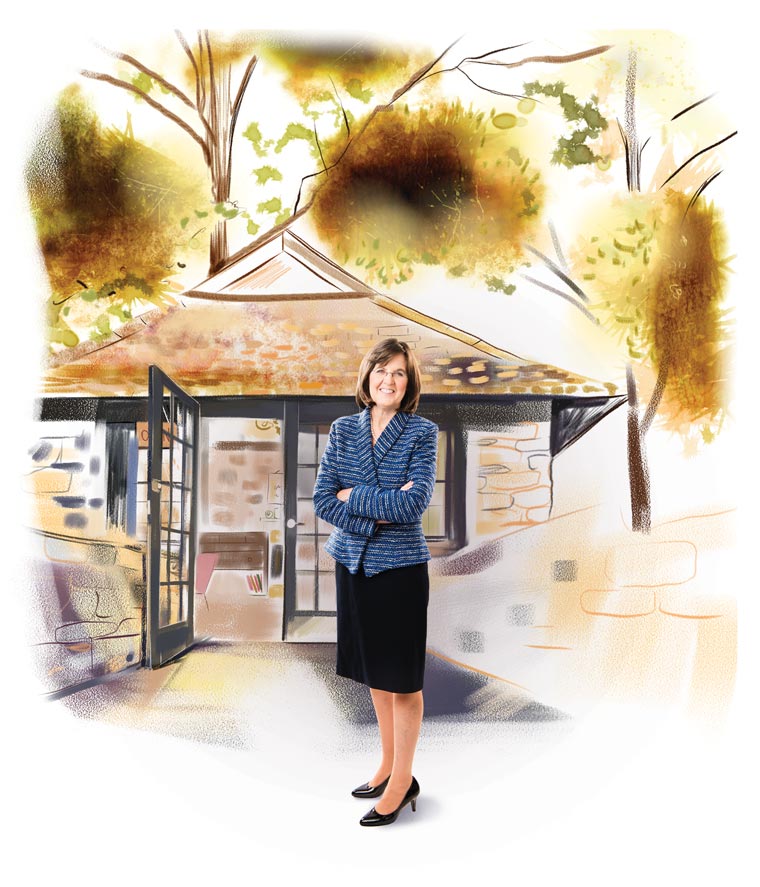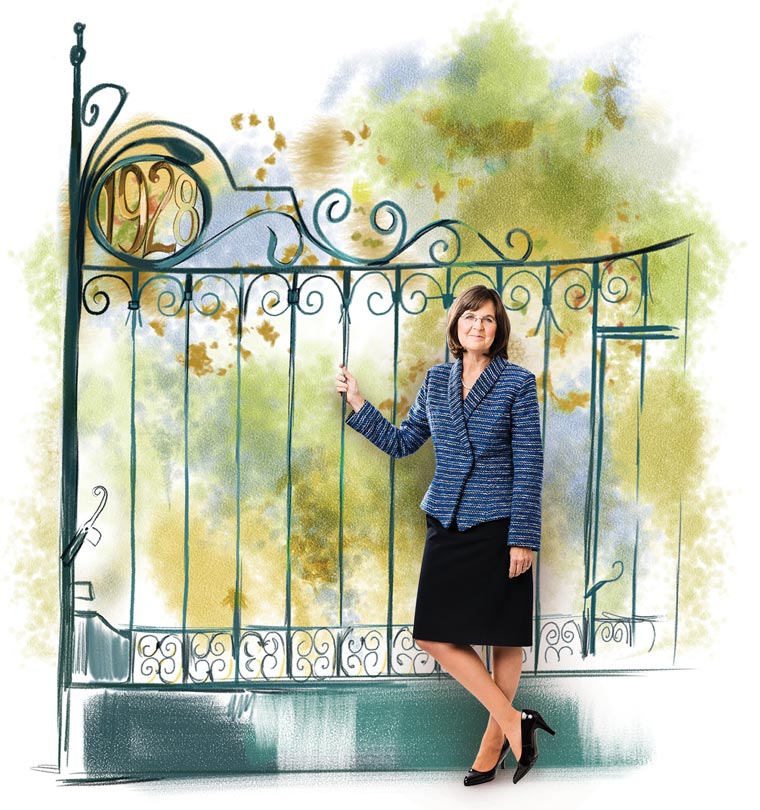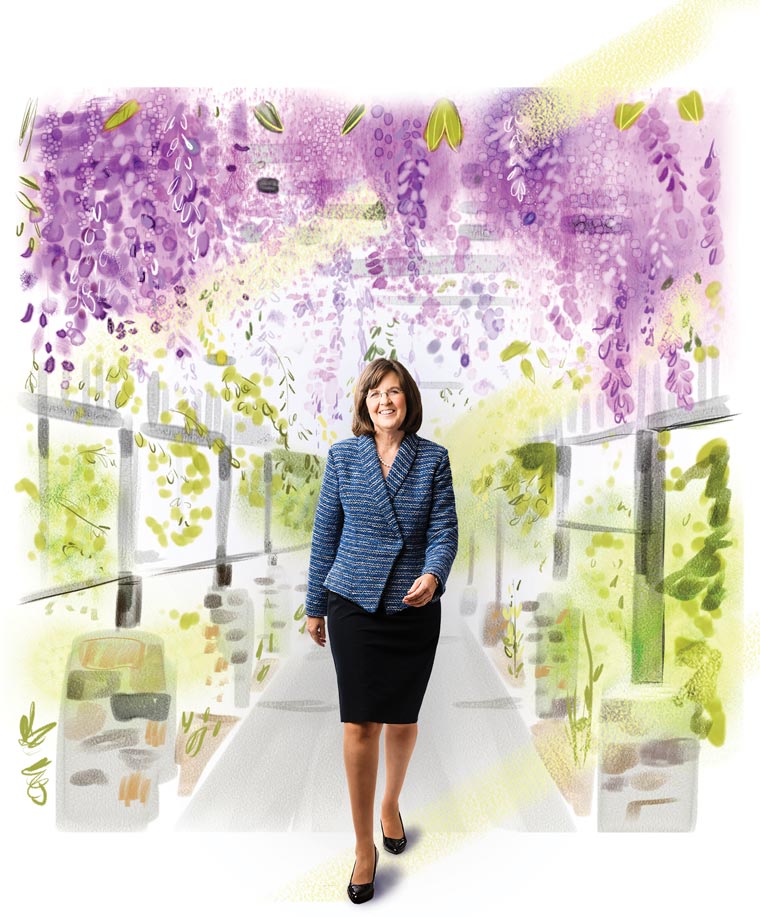Cristle Collins Judd has spent her life at the nexus of art, practice, theory, and history—as a performer, scholar, teacher, and administrator.
She has taught on three continents in widely varying institutions: conservatory, state university, research university, liberal arts college. She was the first woman to attain tenure in the music department at the University of Pennsylvania and the first woman appointed dean for academic affairs at Bowdoin, where she continued to teach music. Most recently, she served as a senior program officer at the Andrew W. Mellon Foundation, gaining a bird’s-eye perspective on the higher education landscape.
Clearly, the newly appointed 11th president of Sarah Lawrence College is the ultimate Renaissance woman.
Reflecting on her career, President Judd says serendipity has often been an impetus to move in unexpected directions. She understands serendipity not as merely a “happy accident,” but as discovery that brings to bear and into relation all of one's knowledge in unforeseen ways. In Judd’s view, such discovery is made possible by keen observation, the courage to risk forging an original path, and the willingness to embrace surprises along the way.
This summer, Vijay Seshadri (writing) sat down with President Judd for a wide-ranging discussion. The following excerpt from their conversation offers insight as to how her previous experiences inspire and influence how she thinks—and, most important, how she leads.
Seshadri: I’ve seen two presidents at Sarah Lawrence and have seen their different approaches. I think their training in their academic fields affected the way they thought about governance and the way they thought about the school itself. Does your experience as a musicologist and historian of music affect your approach to academic governance?
President Judd: I actually began my academic study as a performer. That part of me developed a focus on collaboration, on disciplined preparation, on events in real time, on learning how to respond, reflect, interact, and improvise. But I am also a music theorist and very analytical. The theorist part of me likes to understand how systems work—the big picture in relation to the small and the small in relation to the large. And as a music historian, I’m sensitive to trying to understand cultural context and asking, How does the past set up the present? How does that shape the way we think about the future?
Seshadri: Administrators and presidents of institutions have to think about curriculum in terms of responsibility—a responsibility that requires them to orient students to the world in some way. They have, for example, to ask themselves, “Are we training our students for this world, this coming world, with all of its complexity?”
President Judd: Sarah Lawrence has in its bones a pedagogy that emphasizes a type of learning and experiencing that many other institutions are struggling to create: faculty-mentored, authentic research experiences; learning how to engage with the community; inter-/multi-/trans-disciplinary work. … Students today need to go out in this world knowing how to do this kind of creative work individually and in collaboration to address that complexity.
We also must complement and sometimes counter the tendency of narrow fields that are ever narrowing. Real questions and big problems require a variety of approaches. As a simple and personal example, I can’t really begin to tackle the most interesting questions in my work on music of the Renaissance without perspectives informed by religious studies, by theology, by art history. I don’t approach questions the way scholars in those fields do, but if I tried to somehow scrape off or ignore all those parts, I’d lose everything that’s interesting about what I study. At the same time that we encourage breadth, we have to be sure that we are connecting students with opportunities that will empower them to go further within a particular field or discipline—say, to go on to graduate school in physics.
“Sarah Lawrence has in its bones a pedagogy that emphasizes a type of learning and experiencing that many other institutions are struggling to create.”
Seshadri: Do you think liberal arts curricula generally, and Sarah Lawrence’s specifically, can provide those sorts of pathways?
President Judd: I do. Part of my perspective comes from wearing previous hats—as a director of graduate studies at Penn, as dean for academic affairs at Bowdoin, and, most recently, as a program officer at the Mellon Foundation, where I supported a number of initiatives in graduate education. Increasingly, graduate programs are trying to understand their space in the educational ecosystem, and they want students who have breadth and curiosity, who have demonstrated their potential to ask and pursue interesting questions. Students from liberal arts colleges fare enormously well. Per capita, liberal arts colleges send far more students into graduate work in the sciences, largely because they’ve done mentored research. They’ve been able to develop and demonstrate their persistence, grit, and creativity—and their potential to make knowledge.
The experience at Sarah Lawrence of small classes, of being responsible for your work and taking ownership of it, of identifying and following a path, of learning how to ask questions and pursue answers, gives students a trajectory that will sustain them through graduate school or whatever career they choose.
Seshadri: One of the shibboleths—if that is the right word—of Sarah Lawrence is “Follow your bliss.” We laugh about this sometimes, but the laughter becomes a little uneasy when the idea behind it intersects with the curricular and pedagogical issues educators currently confront.
President Judd: [Laughs.] Well, I have a daughter still in college, one who just graduated who is starting graduate school, and one who finished a master’s degree and is gainfully employed, so I also bring a parental perspective to these questions!
The BA from Sarah Lawrence is a Bachelor of Arts in Liberal Arts, and that’s an interesting proposition. It’s not a degree in a specific discipline, not a Bachelor of Fine Arts or a Bachelor of Science, but a degree in the liberal arts.
With that in mind, how do we ensure opportunities that fully enrich the single-mindedness of students who come in and say, “I only want to do this thing, and I know I only want to do this thing”? While it’s terrific to have that direction—it’s an amazing thing to dedicate oneself single-mindedly to the pursuit of writing short stories, for example—the undergraduates who are best at writing those short stories have many other kinds of experiences that inform their work, and our job is to open those experiences to students as part of their immersion in the liberal arts.
Seshadri: I’d like to ask you to address the issue of diversity. There are complexities inherent to being a college president in the here and now, given the turmoil on campuses about race and gender. Sarah Lawrence is progressive, but we are not free from these conflicts.
“How do we take advantage of being brought together on this campus? We must provide a framework for students to really learn to listen to, to see, and to hear each other.”
President Judd: It’s hard to think of a more pressing issue for American higher education than really understanding what diversity and inclusion mean. We need to understand what it is to be inclusively inclusive, as opposed to exclusively inclusive, the all-too-easy tendency to privilege certain categories and find others reprehensible, and then imply that to be inclusive you actually have to adopt a particular point of view.
This is a relational institution, so the starting point needs to be asking how we create an environment in which we can live and learn together. How do we take advantage of being brought together on this campus? We must provide a framework for students to really learn to listen to, to see, and to hear each other with respect and empathy.
Living in community with people and learning from them is bound to be contentious, painful, challenging, unsettling, destabilizing—while it can also build the deepest relationships and learning people will have over the course of their lives. Real engagement is hard work.
Seshadri: There has to be, on the one hand, a political dispensation that acknowledges everyone’s absolute equality, but on the other hand acknowledges radical difference, too.
What do you think your job as College president is in this situation? Do you see yourself as harmonizing these various obligations and imperatives and somehow bringing them into relationship with one another?
President Judd: There are multiple roles. The first is to set the tone for the College of mutual respect and trust. Second, the president also has to build relationships across the campus with varieties of constituents. And third, people do have to feel that while the president is delegating many responsibilities, appropriately, she’s engaged with the conversations that matter most on the campus.
It’s so easy for conversations to instantly ratchet up. In fact, they’re often ratcheted up before they start. So how does the president not harmonize, but recognize the imperative and find a way to keep the conversations going? Find a way for people to have the space to disagree.
Seshadri: Any final thoughts?
President Judd: Sarah Lawrence has such a rich history of lives transformed through its distinctive education. I’m looking forward to experiencing and understanding this firsthand and working with faculty, staff, and alumni to ensure that the College thrives into the future. Above all, I’m excited about living and breathing this community.
Condensed and edited by Katharine Reece MFA ’12
Photo Illustrations by Laura Barisonzi + Lucy Truman



